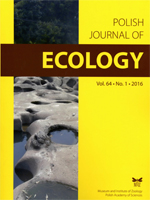The fat dormouse (Glis glis L.) is a small arboreal and extreme habitat specialist mammal that is tightly linked to the deciduous mixed forests dominated by Beech (Fagus orientalis) and oaks (Quercus sp.). Despite its status in Iran as a least concern species, dormice face high risk of extinction in some parts of Europe. The unique life history and large scale distribution of the species in the Palearctic region made it as an ideal model species. This habitat specialist rodent is particularly sensitive to size and connectivity of the forest patches. The fat dormouse shows very deep molecular and morphological divergence in its eastern most parts of its global distribution, in the Hyrcanian refugium of the Northern Iran. Therefore modeling its distributional range can leads to identify biodiversity hotspots and planning conservation activities. The meteorological data, land cover types, topographical variables and geo-referenced points representing geographical locations of the fat dormouse populations (latitude/longitude) in the study area were used as the primary MaxEnt model input data. The predictive accuracy of the Fat Dormouse ecological niche model was significant (training accuracy of 93.3%). This approach successfully identified the areas of the fat dormouse presence across the study area. The result suggests that the maximum entropy modeling approach can be implemented in the next step towards the development of new tools for monitoring the habitat fragmentation and identifying biodiversity hotspots.
How to translate text using browser tools
1 March 2016
Fat Dormouse (Glis glis L.) Distribution Modeling in the Hyrcanian Relict Forests of Northern Iran
Morteza Naderi,
Mohammad Kaboli,
Mohsen Ahmadi,
Boris Kryštufek
ACCESS THE FULL ARTICLE
<
Previous Article
|

Polish Journal of Ecology
Vol. 64 • No. 1
March 2016
Vol. 64 • No. 1
March 2016
fat dormouse
habitat modeling
Hyrcanian refugium
macro habitat variables
Maximum entropy




